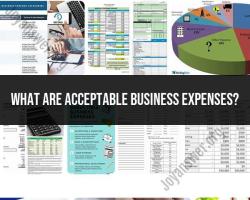How much should you set aside for small business taxes?
Determining how much to set aside for small business taxes depends on various factors, including your business structure, income, expenses, deductions, and tax rates. Here's a general guide to estimating tax reserves for small businesses:
Steps to Estimate Tax Reserves:
Understand Tax Obligations:
- Know your business structure (sole proprietorship, partnership, LLC, S-Corp, etc.) as tax obligations differ.
- Understand federal, state, and local tax requirements applicable to your business.
Track Income and Expenses:
- Maintain accurate and up-to-date financial records to track income, expenses, and deductions throughout the year.
Estimate Taxable Income:
- Project your annual taxable income based on current earnings, taking into account potential deductions and credits.
Determine Tax Rates:
- Identify the applicable tax rates for your business structure and income level.
Consider Quarterly Payments:
- If required, make estimated quarterly tax payments to the IRS and state tax agencies to avoid penalties.
Consult with a Tax Professional:
- Work with a tax advisor or accountant who specializes in small business taxes for personalized guidance.
Formula for Estimating Tax Reserves:
Here's a simplified formula that businesses often use to estimate tax reserves:
Estimated Taxable Income: Your projected annual taxable income after deductions and adjustments.
Estimated Tax Rate: The combined federal, state, and local tax rate applicable to your business.
Considerations and Factors:
Tax Deductions: Identify deductible expenses, credits, and deductions to reduce taxable income.
Tax Credits: Explore potential tax credits available for small businesses, such as research credits or small business health care credits.
Tax Law Changes: Stay informed about changes in tax laws or regulations that may affect your tax liability.
Cash Flow Management: Ensure that setting aside funds for taxes doesn't significantly impact your business's cash flow and operations.
Importance of Accuracy:
Estimating tax reserves accurately is crucial to avoid underpayment penalties or cash flow issues. Regularly review your financials and consult with tax professionals for precise estimations tailored to your business circumstances.
Estimating tax liabilities based on business structure, tax bracket, and expected earnings
Estimating tax liabilities is crucial for businesses to plan their finances effectively and avoid potential penalties. The specific steps involved will vary depending on the business structure, tax bracket, and expected earnings. However, some general guidelines include:
Identify Business Structure: Determine the business structure, such as sole proprietorship, partnership, LLC, or corporation, as each has different tax implications.
Gather Financial Information: Collect all relevant financial documents, including income statements, balance sheets, and expense reports, to accurately estimate earnings.
Determine Applicable Tax Bracket: Identify the appropriate tax bracket based on the business structure and taxable income.
Calculate Taxable Income: Calculate taxable income by subtracting allowable deductions and expenses from gross revenue.
Estimate Tax Liabilities: Apply the appropriate tax rates to taxable income to estimate tax liabilities.
Consider Quarterly Estimated Tax Payments: For businesses with significant tax liabilities, consider making quarterly estimated tax payments to avoid penalties.
Establishing a tax savings plan and setting aside funds regularly throughout the year
A tax savings plan helps businesses manage their tax liability and potentially reduce their overall tax burden. Here are some key steps:
Set Tax Savings Goals: Determine specific tax savings goals, such as reducing taxable income or maximizing deductions.
Identify Tax Savings Strategies: Explore various tax savings strategies, such as maximizing retirement contributions, utilizing tax credits, and optimizing business expenses.
Create a Tax Savings Budget: Allocate a portion of earnings towards tax savings throughout the year.
Establish Tax Savings Accounts: Consider opening dedicated tax savings accounts, such as a health savings account (HSA) or a flexible spending account (FSA), to set aside funds for tax-advantaged expenses.
Automate Tax Savings: Set up automatic transfers from your business checking account to your tax savings accounts to ensure consistent contributions.
3. Seeking Professional Advice from a Tax Accountant
Consulting with a qualified tax accountant can provide valuable insights and guidance for managing tax liabilities and optimizing tax savings. Tax accountants can:
Review Financial Information: Analyze financial data to accurately estimate tax liabilities and identify potential tax savings opportunities.
Provide Tax Projections: Prepare detailed tax projections to forecast future tax liabilities and inform financial planning.
Recommend Tax Strategies: Suggest tailored tax strategies aligned with the business's specific circumstances and goals.
Assist with Tax Preparation: Prepare and file accurate tax returns to ensure compliance and minimize the risk of errors.
Stay Updated on Tax Laws: Stay abreast of changes in tax laws and regulations to ensure adherence and identify new tax benefits.












